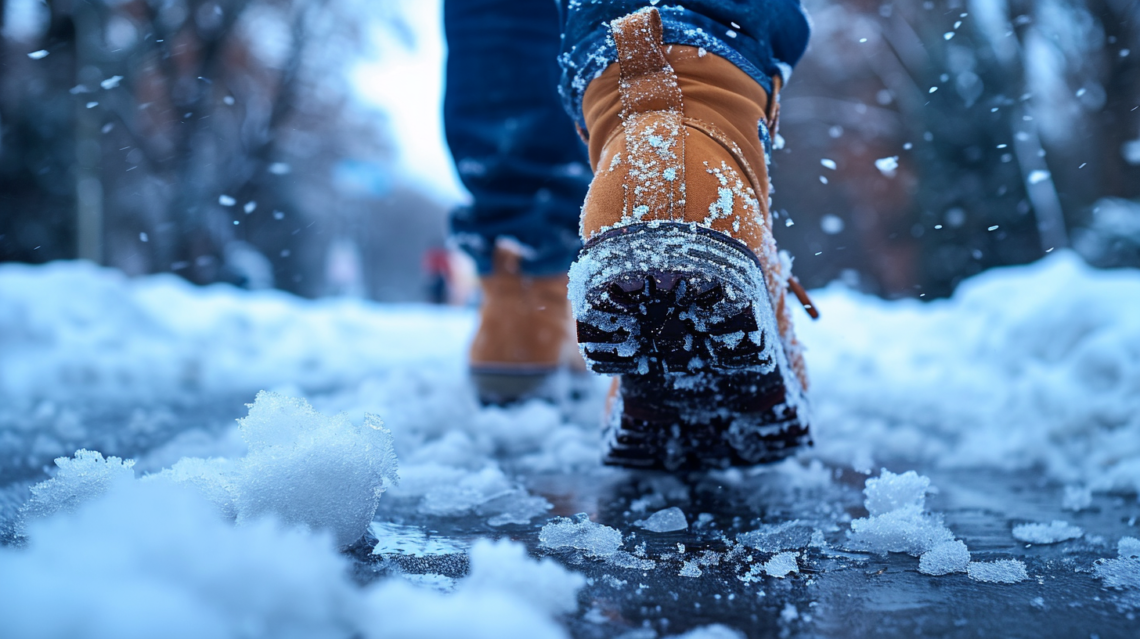
Preventing Slips and Falls in Snowy and Icy Conditions
In the heart of winter, the picturesque scenery of snow-covered landscapes brings with it a less desirable companion: the increased risk of slips and falls due to ice and snow. These incidents, often underestimated in their potential severity, pose a significant public health concern, particularly in regions where snow and ice are seasonal constants. It is crucial to delve into the various aspects of this issue, ranging from understanding the risk factors and consequences of such falls, to exploring effective prevention strategies and the role of public policy in mitigating these risks.
The Underlying Risks and Consequences of Winter Falls
Slips and falls on ice and snow are not mere trivialities; they can lead to serious injuries, with the elderly population being particularly vulnerable. The mechanics of a slip on ice are deceptively simple yet perilous. A thin layer of ice, often invisible, known as “black ice,” can create a surface with extremely low friction. When an individual steps on such a surface, the lack of traction can lead to a loss of balance, resulting in a fall. These falls can lead to a range of injuries from minor bruises and sprains to more severe outcomes such as fractures, head traumas, and in extreme cases, can be fatal. The psychological impact, especially in older adults, can also be profound, instilling a fear of falling that may lead to reduced mobility and a consequent decline in overall health and quality of life.
Strategies for Prevention: Individual and Community Efforts
Preventing falls in icy conditions necessitates a multifaceted approach. On an individual level, one of the most effective strategies is the use of proper footwear. Shoes with non-slip soles designed for icy conditions can significantly enhance traction. Additionally, adopting a cautious gait, taking slower and smaller steps, can improve stability. Using assistive devices like canes or walkers fitted with ice picks can also be beneficial for those with mobility issues.
On a broader scale, community and municipal efforts play a critical role. Efficient snow removal and de-icing of public walkways are fundamental. However, this is not just a matter of clearing the snow; it requires timely and strategic actions. For instance, applying salt before a snowstorm can prevent ice from forming. Public awareness campaigns about the dangers of winter falls and educational programs teaching safe walking strategies in icy conditions are equally important.
The Role of Public Policy and Future Directions
Public policy has a pivotal role in addressing the issue of winter falls. Regulations that mandate timely snow and ice removal from public spaces can greatly reduce the incidence of falls. Incentives for businesses and homeowners to keep their sidewalks clear can also be effective. Moreover, investing in research to develop better de-icing technologies and improved designs for winter footwear can further aid in fall prevention.
Looking towards the future, the integration of technology offers promising solutions. For example, ‘smart’ sidewalks that can heat up to melt snow and ice or the development of wearable technology that alerts users to slippery conditions are areas worth exploring. Collaboration between public health officials, city planners, and technology developers is essential to develop innovative solutions that can effectively reduce the risk of slips and falls in icy conditions.
The issue of slips and falls due to snow and ice is a significant public health concern that requires a comprehensive approach encompassing individual caution, community efforts, and effective public policy. By adopting a proactive stance and embracing both traditional methods and technological innovations, we can mitigate the risks associated with winter falls and enhance the safety and well-being of communities in snowy climates.

